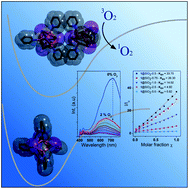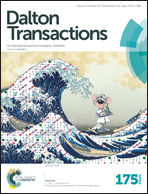The polynuclear complex Cu4I4py4 loaded in mesoporous silica: photophysics, theoretical investigation, and highly sensitive oxygen sensing application†
Abstract
The polynuclear complex Cu4I4py4 has been largely studied in solution and in the powder form due to its interesting luminescent properties, which are largely dependent on temperature and pressure. In this work, we present the synthesis of the complex and its wet impregnation in a mesoporous silica host obtained by sol–gel methodology. For optimized loadings, the well-dispersed guest molecules exhibit strong interaction with molecular oxygen, resulting in a significant quenching of the luminescence. The process is highly reversible with a Stern–Volmer constant of Ksv = 33.8, which is the largest value found in the literature for similar complexes in the solid state, suggesting that the new material is a promising candidate for high sensitivity oxygen sensing. Density Functional Theory (DFT) and Time-Dependent DFT (TD-DFT) calculations reveal a weak intermolecular interaction between the two guest complexes in the excited state, suggesting the formation of an excited state complex (excimer). The assumption of a triplet excimer formation is confirmed by temperature- and concentration-dependent experiments, which provides a new way to explain the giant Stokes shift observed for the guest complex in different media.

- This article is part of the themed collection: SBQ-RSC: Celebrating UK-Brazil collaborations


 Please wait while we load your content...
Please wait while we load your content...